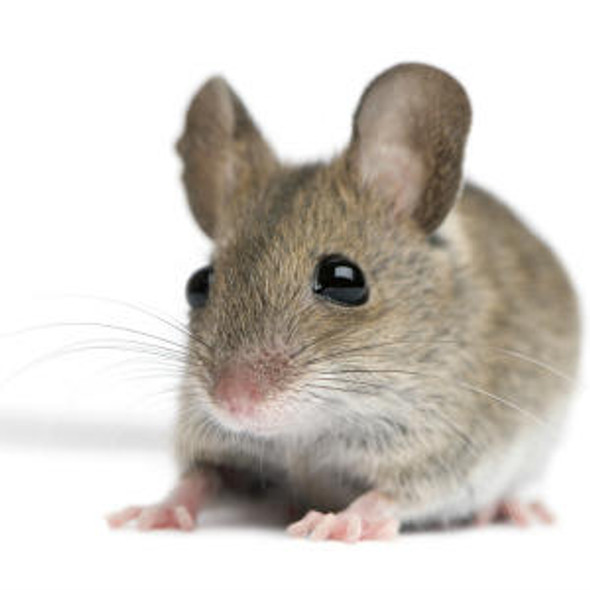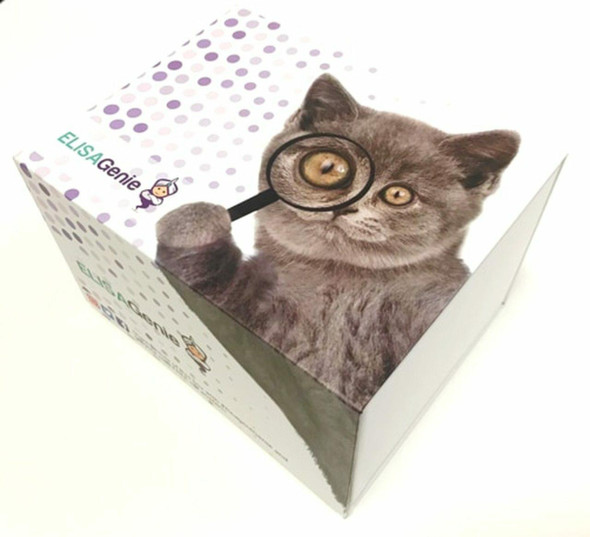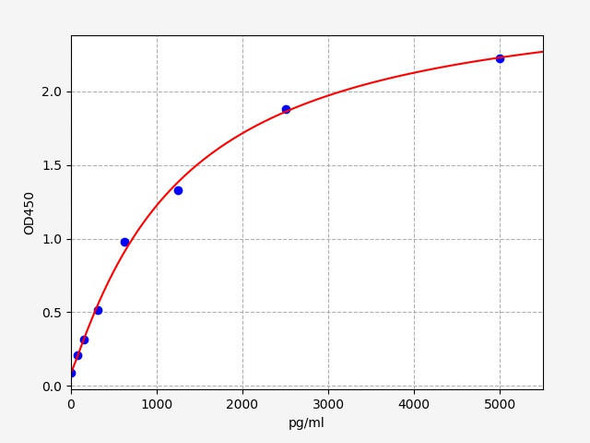Human Myc box-dependent-interacting protein 1 (BIN1) ELISA Kit (HUEB2596)
- SKU:
- HUEB2596
- Product Type:
- ELISA Kit
- Size:
- 96 Assays
- Uniprot:
- O00499
- Range:
- 0.156-10 ng/mL
- ELISA Type:
- Sandwich
- Synonyms:
- BIN1, Bridging integRator 1, Box-dependent myc-interacting protein 1, Amphiphysin II, Amphiphysin-like protein,
- Reactivity:
- Human
Description
Human Myc box-dependent-interacting protein 1 (BIN1) ELISA Kit
The Human MYC Box-Dependent Interacting Protein 1 (BIN1) ELISA Kit is specifically designed for the accurate measurement of BIN1 levels in human samples, including serum, plasma, and cell culture supernatants. This kit offers high sensitivity and specificity, ensuring precise and reproducible results for a variety of research applications.BIN1 is a protein that plays a critical role in cellular processes such as membrane trafficking and endocytosis. Dysregulation of BIN1 has been linked to various diseases, including cancer, cardiovascular diseases, and Alzheimer's disease, making it an important biomarker for studying these conditions and exploring potential therapeutic interventions.
With the Human BIN1 ELISA Kit, researchers can accurately quantify BIN1 levels in human samples, leading to a better understanding of its role in disease pathology and potentially identifying new targets for treatment. The reliable performance and ease of use of this kit make it a valuable tool for research in the fields of cancer biology, cardiovascular research, and neurodegenerative disorders.
| Product Name: | Human Myc box-dependent-interacting protein 1 (BIN1) ELISA Kit |
| SKU: | HUEB2596 |
| Size: | 96T |
| Target: | Human Myc box-dependent-interacting protein 1 (BIN1) |
| Synonyms: | Amphiphysin II, Amphiphysin-like protein, Box-dependent myc-interacting protein 1, Bridging integrator 1, AMPHL |
| Assay Type: | Sandwich |
| Detection Method: | ELISA |
| Reactivity: | Human |
| Detection Range: | 0.156-10ng/mL |
| Sensitivity: | 0.034ng/mL |
| Intra CV: | 6.5% | ||||||||||||||||||||
| Inter CV: | 11.6% | ||||||||||||||||||||
| Linearity: |
| ||||||||||||||||||||
| Recovery: |
| ||||||||||||||||||||
| Function: | May be involved in regulation of synaptic vesicle endocytosis. May act as a tumor suppressor and inhibits malignant cell transformation. |
| Uniprot: | O00499 |
| Sample Type: | Serum, plasma, tissue homogenates, cell culture supernates and other biological fluids |
| Specificity: | Natural and recombinant human Myc box-dependent-interacting protein 1 |
| Sub Unit: | Heterodimer with AMPH. Binds SH3GLB1 (By similarity). Interacts (via SH3 domain) with SYNJ1. Interacts (via SH3 domain) with DNM1. Isoform IIA interacts with CLTC. Isoform IIB does not interact with CLTC. Isoform IIC1 does not interact with CLTC. Isoform IIC2 does not interact with CLTC. Interacts with AP2A2. Interacts with AP2B1. Interacts with MYC (via N-terminal transactivation domain); the interaction requires the integrity of the conserved MYC box regions 1 and 2. Interacts with BIN2. Interacts (SH3 domain) with HCV NS5A. |
| Research Area: | Cancer |
| Subcellular Location: | Isoform IIA Cytoplasm |
| Storage: | Please see kit components below for exact storage details |
| Note: | For research use only |
| UniProt Protein Function: | BIN1: May be involved in regulation of synaptic vesicle endocytosis. May act as a tumor suppressor and inhibits malignant cell transformation. Defects in BIN1 are the cause of centronuclear myopathy type 2 (CNM2). A congenital muscle disorder characterized by progressive muscular weakness and wasting involving mainly limb girdle, trunk, and neck muscles. It may also affect distal muscles. Weakness may be present during childhood or adolescence or may not become evident until the third decade of life. Ptosis is a frequent clinical feature. The most prominent histopathologic features include high frequency of centrally located nuclei in muscle fibers not secondary to regeneration, radial arrangement of sarcoplasmic strands around the central nuclei, and predominance and hypotrophy of type 1 fibers. 11 isoforms of the human protein are produced by alternative splicing. |
| UniProt Protein Details: | Protein type:Tumor suppressor; Cytoskeletal; Adaptor/scaffold; Vesicle Chromosomal Location of Human Ortholog: 2q14 Cellular Component: I band; synaptic vesicle; membrane; axon; T-tubule; cytoplasm; nerve terminal; Z disc; nucleus; actin cytoskeleton Molecular Function:identical protein binding; protein binding; GTPase binding; protein heterodimerization activity; protein complex binding; tau protein binding Biological Process: cell proliferation; muscle cell differentiation; viral reproduction; regulation of neuron differentiation; positive regulation of apoptosis; positive regulation of endocytosis; endocytosis; positive regulation of GTPase activity; positive regulation of astrocyte differentiation Disease: Myopathy, Centronuclear, 2 |
| NCBI Summary: | This gene encodes several isoforms of a nucleocytoplasmic adaptor protein, one of which was initially identified as a MYC-interacting protein with features of a tumor suppressor. Isoforms that are expressed in the central nervous system may be involved in synaptic vesicle endocytosis and may interact with dynamin, synaptojanin, endophilin, and clathrin. Isoforms that are expressed in muscle and ubiquitously expressed isoforms localize to the cytoplasm and nucleus and activate a caspase-independent apoptotic process. Studies in mouse suggest that this gene plays an important role in cardiac muscle development. Alternate splicing of the gene results in ten transcript variants encoding different isoforms. Aberrant splice variants expressed in tumor cell lines have also been described. [provided by RefSeq, Sep 2011] |
| UniProt Code: | O00499 |
| NCBI GenInfo Identifier: | 14916535 |
| NCBI Gene ID: | 274 |
| NCBI Accession: | O00499.1 |
| UniProt Secondary Accession: | O00499,O00297, O00545, O43867, O60552, O60553, O60554 O60555, O75514, O75515, O75516, O75517, |
| UniProt Related Accession: | O00499 |
| Molecular Weight: | 593 |
| NCBI Full Name: | Myc box-dependent-interacting protein 1 |
| NCBI Synonym Full Names: | bridging integrator 1 |
| NCBI Official Symbol: | BIN1 |
| NCBI Official Synonym Symbols: | AMPH2; AMPHL; SH3P9 |
| NCBI Protein Information: | myc box-dependent-interacting protein 1; amphiphysin II; amphiphysin-like protein; box dependant MYC interacting protein 1; box-dependent myc-interacting protein 1 |
| UniProt Protein Name: | Myc box-dependent-interacting protein 1 |
| UniProt Synonym Protein Names: | Amphiphysin II; Amphiphysin-like protein; Box-dependent myc-interacting protein 1; Bridging integrator 1 |
| Protein Family: | Myc box-dependent-interacting protein |
| UniProt Gene Name: | BIN1 |
| UniProt Entry Name: | BIN1_HUMAN |
| Component | Quantity (96 Assays) | Storage |
| ELISA Microplate (Dismountable) | 8×12 strips | -20°C |
| Lyophilized Standard | 2 | -20°C |
| Sample Diluent | 20ml | -20°C |
| Assay Diluent A | 10mL | -20°C |
| Assay Diluent B | 10mL | -20°C |
| Detection Reagent A | 120µL | -20°C |
| Detection Reagent B | 120µL | -20°C |
| Wash Buffer | 30mL | 4°C |
| Substrate | 10mL | 4°C |
| Stop Solution | 10mL | 4°C |
| Plate Sealer | 5 | - |
Other materials and equipment required:
- Microplate reader with 450 nm wavelength filter
- Multichannel Pipette, Pipette, microcentrifuge tubes and disposable pipette tips
- Incubator
- Deionized or distilled water
- Absorbent paper
- Buffer resevoir
*Note: The below protocol is a sample protocol. Protocols are specific to each batch/lot. For the correct instructions please follow the protocol included in your kit.
Allow all reagents to reach room temperature (Please do not dissolve the reagents at 37°C directly). All the reagents should be mixed thoroughly by gently swirling before pipetting. Avoid foaming. Keep appropriate numbers of strips for 1 experiment and remove extra strips from microtiter plate. Removed strips should be resealed and stored at -20°C until the kits expiry date. Prepare all reagents, working standards and samples as directed in the previous sections. Please predict the concentration before assaying. If values for these are not within the range of the standard curve, users must determine the optimal sample dilutions for their experiments. We recommend running all samples in duplicate.
| Step | |
| 1. | Add Sample: Add 100µL of Standard, Blank, or Sample per well. The blank well is added with Sample diluent. Solutions are added to the bottom of micro ELISA plate well, avoid inside wall touching and foaming as possible. Mix it gently. Cover the plate with sealer we provided. Incubate for 120 minutes at 37°C. |
| 2. | Remove the liquid from each well, don't wash. Add 100µL of Detection Reagent A working solution to each well. Cover with the Plate sealer. Gently tap the plate to ensure thorough mixing. Incubate for 1 hour at 37°C. Note: if Detection Reagent A appears cloudy warm to room temperature until solution is uniform. |
| 3. | Aspirate each well and wash, repeating the process three times. Wash by filling each well with Wash Buffer (approximately 400µL) (a squirt bottle, multi-channel pipette,manifold dispenser or automated washer are needed). Complete removal of liquid at each step is essential. After the last wash, completely remove remaining Wash Buffer by aspirating or decanting. Invert the plate and pat it against thick clean absorbent paper. |
| 4. | Add 100µL of Detection Reagent B working solution to each well. Cover with the Plate sealer. Incubate for 60 minutes at 37°C. |
| 5. | Repeat the wash process for five times as conducted in step 3. |
| 6. | Add 90µL of Substrate Solution to each well. Cover with a new Plate sealer and incubate for 10-20 minutes at 37°C. Protect the plate from light. The reaction time can be shortened or extended according to the actual color change, but this should not exceed more than 30 minutes. When apparent gradient appears in standard wells, user should terminatethe reaction. |
| 7. | Add 50µL of Stop Solution to each well. If color change does not appear uniform, gently tap the plate to ensure thorough mixing. |
| 8. | Determine the optical density (OD value) of each well at once, using a micro-plate reader set to 450 nm. User should open the micro-plate reader in advance, preheat the instrument, and set the testing parameters. |
| 9. | After experiment, store all reagents according to the specified storage temperature respectively until their expiry. |
When carrying out an ELISA assay it is important to prepare your samples in order to achieve the best possible results. Below we have a list of procedures for the preparation of samples for different sample types.
| Sample Type | Protocol |
| Serum | If using serum separator tubes, allow samples to clot for 30 minutes at room temperature. Centrifuge for 10 minutes at 1,000x g. Collect the serum fraction and assay promptly or aliquot and store the samples at -80°C. Avoid multiple freeze-thaw cycles. If serum separator tubes are not being used, allow samples to clot overnight at 2-8°C. Centrifuge for 10 minutes at 1,000x g. Remove serum and assay promptly or aliquot and store the samples at -80°C. Avoid multiple freeze-thaw cycles. |
| Plasma | Collect plasma using EDTA or heparin as an anticoagulant. Centrifuge samples at 4°C for 15 mins at 1000 × g within 30 mins of collection. Collect the plasma fraction and assay promptly or aliquot and store the samples at -80°C. Avoid multiple freeze-thaw cycles. Note: Over haemolysed samples are not suitable for use with this kit. |
| Urine & Cerebrospinal Fluid | Collect the urine (mid-stream) in a sterile container, centrifuge for 20 mins at 2000-3000 rpm. Remove supernatant and assay immediately. If any precipitation is detected, repeat the centrifugation step. A similar protocol can be used for cerebrospinal fluid. |
| Cell culture supernatant | Collect the cell culture media by pipette, followed by centrifugation at 4°C for 20 mins at 1500 rpm. Collect the clear supernatant and assay immediately. |
| Cell lysates | Solubilize cells in lysis buffer and allow to sit on ice for 30 minutes. Centrifuge tubes at 14,000 x g for 5 minutes to remove insoluble material. Aliquot the supernatant into a new tube and discard the remaining whole cell extract. Quantify total protein concentration using a total protein assay. Assay immediately or aliquot and store at ≤ -20 °C. |
| Tissue homogenates | The preparation of tissue homogenates will vary depending upon tissue type. Rinse tissue with 1X PBS to remove excess blood & homogenize in 20ml of 1X PBS (including protease inhibitors) and store overnight at ≤ -20°C. Two freeze-thaw cycles are required to break the cell membranes. To further disrupt the cell membranes you can sonicate the samples. Centrifuge homogenates for 5 mins at 5000xg. Remove the supernatant and assay immediately or aliquot and store at -20°C or -80°C. |
| Tissue lysates | Rinse tissue with PBS, cut into 1-2 mm pieces, and homogenize with a tissue homogenizer in PBS. Add an equal volume of RIPA buffer containing protease inhibitors and lyse tissues at room temperature for 30 minutes with gentle agitation. Centrifuge to remove debris. Quantify total protein concentration using a total protein assay. Assay immediately or aliquot and store at ≤ -20 °C. |
| Breast Milk | Collect milk samples and centrifuge at 10,000 x g for 60 min at 4°C. Aliquot the supernatant and assay. For long term use, store samples at -80°C. Minimize freeze/thaw cycles. |









